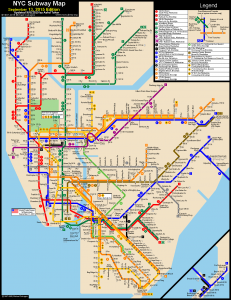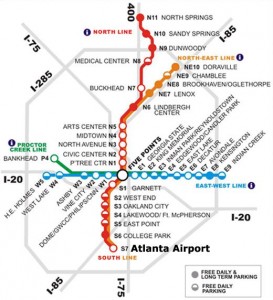Hidden Signs
Upon reading the Yale Law Journal by Sarah Schindler on Architectural Exclusion, I was enlightened on the practice of using the physical architectural to zone the black neighborhoods against the white neighborhoods that still plagues the realm of city planning to this day. The article sets a good framework in the introduction by really honing in on the idea that this is not an out dated practice with the insertion of the failures of the MARTA railway systems to trickle out into the suburban areas. This failure sets up this issues to be relevant not only in time but space since we as Georgia State students are affected by MARTA and have utilized it at least once in our academic career. This journal goes on to talk about how us as citizens are made to believe that these architectural infrastructures such as one way streets or low hanging bridges are anything but regular structures in a urban area. They paint a very vivid picture filled with details of deeper more sinister intentions behind these specific structures with tales of poorer black communities being shunned away from white privileged cities and labeling the new changes as ‘noise and traffic control’. These structural changes are brushed away as other things besides racially targeting black neighborhoods. They also explain the progression of this exclusionary act into the courts as people try to make claims against these structures as the citizens were being made more aware of the true intentions of these changes and exclusions.
Court Justice
Even though there are many clauses and laws set to protect against racially targeting practices like the Thirteenth Amendment and the Equal Protection Clause, it’s hard for people to get the justice they deserve. It is not hard to prove the act itself however, it is almost impossible to prove intent and within these courts intent is what is the most important. The cities will just brush the changes under as noise control, traffic control, and pollution curbing and because of this difficulty to prove the racially charged intent, there has been little victory within the courts. They raise claims that they have had smaller victories like with the Evans v. Tubbe case and how the courts ruled that the black residents who own property with direct access through another property, should not have any less access than those of white residents. Yet the journal sees another objective line that the courts will have to draw within these rulings in where the black communities fall under the spectrum of inconvenience imposed by these infrastructures and when the intervention is appropriate. The article is inundated with a vast number of court cases that all seem to stem from the same story of exclusionary practices with city planning.
Solutions
In the end, they raise the problems that seem to block progress on getting rid of these practices. These problems stem from these structures being a generational infrastructure that will last many years and will be tedious to destroy. And with the long lasting nature of these infrastructures, the problems that the current and past residents are fighting for will still be an issue for many more generations to come. Since buildings and streets aren’t readily or willingly removed, the fight to destroy and keep exclusionary practices away from city planning will be a long battle. They also propose that change will not happen within the courts but with legislation and how the laws can further protect the black and poorer residents. With the courts being very objective with intent and the spectrum of inconvenience that they will have to determine, they believe the most pragmatic way of getting progress will be within new laws and a new coalition with lawmakers to make sure that cities are not reflecting the sentiments of racism within their roads and buildings.
Photo Credits: http://martaguide.com/rail-station-map/
http://web.mta.info/nyct/maps/subwaymap.pdf


Leave a Reply